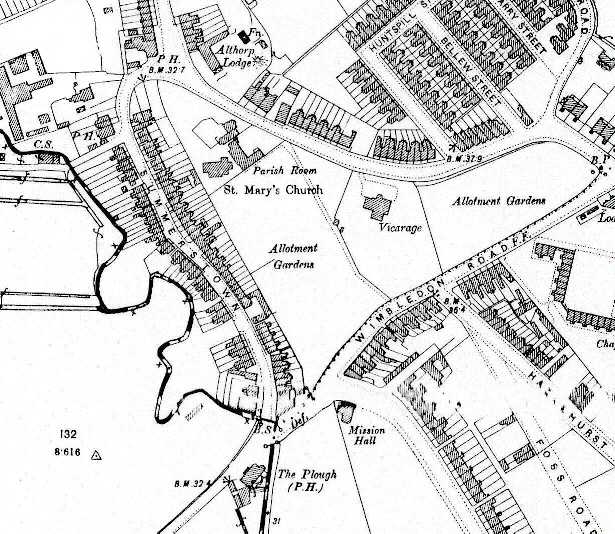By Simon Steer
Most, if not all, who regularly attend St Mary's will have noted that the passing of time is reaching a watershed for the current building that is St Mary's Church. There has been a St Mary's since 1835 but the turning of the century was also a turning point for our church as the previous building had become unsafe and had been taken down with the new building being erected over the following few years. The map below shows Summerstown as it was in 1896. Note that the temporary church and the schoolrooms are adjacent to Garratt Lane in the North West of the Triangle.

How easy that sounds, but not so, and thanks to the Parish Magazine, it is hoped that some light might be shed on just what this took, hopefully in time for the celebration of the centenary of our church, a comfortable and welcoming place of worship.
In reading the parish magazine, preserved within the church, I hoped to get an insight into the life of the Parish and the part taken by the church. To date, I have read two volumes, the first held in the archives, representing the year 1901 and the second, 1902. The magazine was bound with the monthly copies of "The Church Monthly", another interesting publication that gave an insight into the world affairs, mostly through the eyes of clergymen.
Amongst other things, the magazines are a chronicle of the struggle to get by with a church not large enough to house the Sunday school, let alone a congregation. During 1902, the Rev Robinson reports that the Sunday school was now so large that the church schoolrooms no longer sufficed, and space was therefore leased within the Smallwood Borders School to accommodate the 400 boys and girls who regularly attended.
It is only logical to make a comparison between 1901 and 2001, and both the size of the population and number of houses, are significantly larger today. The size of the population and the numbers attending church are not recorded within the Magazine. By the close of 1900, the Rev Dr Flynn retired and in January 1901 it was announced that his successor would be Rev. Thomas B. Milton. However, the vicar of St Mary was Rev. John Robinson, the man responsible for the construction of the current St Mary's, Yes, there was sufficient work for two full time clergymen.
There where also two Church wardens, four sidesmen, an organist, 11 Choir men and 12 Choir boys. There was Children's Sunday morning worship, four bible classes, Sunday school, a Mothers meeting, the Band of Hope and the Scripture Union.
In addition, the church sponsored both a cricket team and a football team and it can be clearly seen that the church is at the centre of the community. The August 1901 magazine states the number of houses and the population of the parish. This was divided between the civil parishes (or parts thereof), that fell within the parish of Summerstown included 801 inhabited houses containing 4,019 "souls". The magazines published regularly a number of facts but, did not report the number of attendees. Rev Robinson indicated that the temporary iron church could house 200 worshippers but there were 500 subscribers of the church magazine. The December magazine reported the hiring of part of Smallwood School, to be able to start a second Sunday school for the children in that part of the parish (A second Sunday school!).
It has to be said that the community was far less diverse in nature, in stark contrast to the population of today. Even taking into account the various cultures of the current population, the percentage of those attending the church was significantly higher back in the good old days, I would estimate the numbers to be between two and three hundred per week, if not more, plus the children, young men and young ladies at the bible classes. By the close of 1902, there were some 580 people subscribing to the church magazine.
Worshippers at St Mary's today are fewer in number but what we lack in numbers we make up in enthusiasm but even so, with the two choirs and a full church, it must have been quite a sight and sound to behold.
As I read, I gather information for a project to help celebrate the centenary of our church but I am sure that there will be other snippets that might be of interest, so, watch this space!
November 2002.